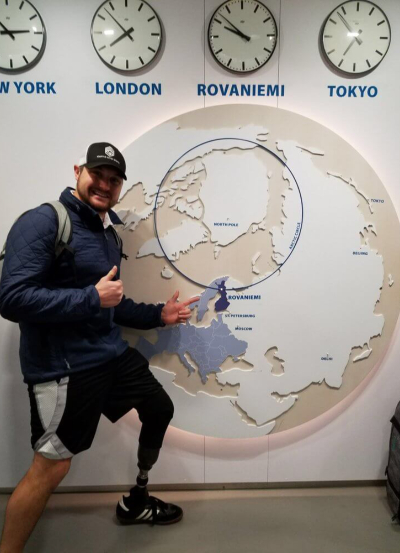Joe Pleban had developed a rare and painful joint disease called pigmented villonodular synovitis (PVNS) that caused tumors to invade his ankle. A lifelong athlete, Joe tried numerous surgeries and treatments in an attempt to return to his active lifestyle, but with no success.
“I started to lose these huge chunks of my life with each sport that I lost the ability to play,” said Joe. When he was no longer able to participate in his beloved snowboarding sport, he despaired. Finally, his only option was either an ankle fusion, which would limit his mobility, or amputation. Joe chose amputation in the hope of continuing his sporting lifestyle with the use of a prosthetic.
Joe famously tattooed “Please cut here” on his left ankle a month before his amputation surgery and took his left foot on a bucket list of adventures.
Unfortunately, Joe’s amputation left him with nerve and phantom limb pain. The active life he had envisioned for himself could not be realized because the pain prevented him from using his prosthetic.
“I could describe [the phantom limb pain] with a great deal of precision,” said Joe. “For example, it felt like someone was taking my second biggest toe and pulling it backwards as far as they could. Or someone was taking my last two toes and curling and crushing them. Or someone was sticking a needle through my ankle. And then there was just a constant pain along with twinges of sharp pain.”






 To manage his pain, Joe was prescribed anti-inflammatories, opioids and nerve pain medications. Joe said the anti-inflammatories “didn’t put a dent” in the pain. The other medications were not ideal for long-term use.
To manage his pain, Joe was prescribed anti-inflammatories, opioids and nerve pain medications. Joe said the anti-inflammatories “didn’t put a dent” in the pain. The other medications were not ideal for long-term use.


